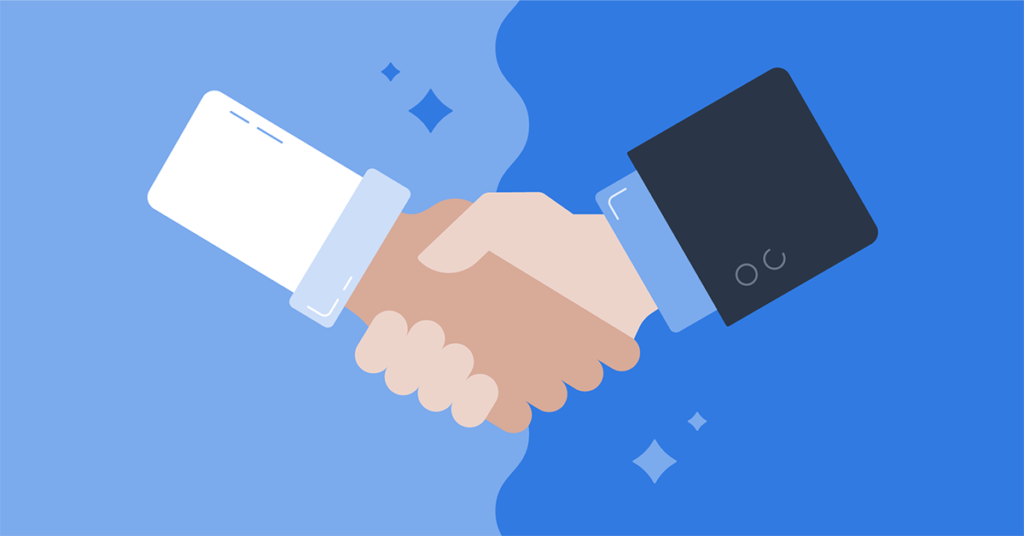Lead generation is like the first step on a journey. It’s all about finding potential customers who might be interested in what you have to offer. Think of it like casting a wide net into the sea, hoping to catch some fish. But here’s the thing: just getting leads isn’t enough. You’ve got to reel those fish in if you want to make a sale.
That’s where closing a deal comes in. Closing a deal means turning those leads into paying customers. It’s the final step in the sales process, where all your hard work pays off.
So, in this blog, we’re going to talk about how to go beyond lead generation and focus on closing deals. We’ll explore strategies to help you turn those leads into loyal customers who keep returning for more.
Understanding the Principle of 7 Touch Points:

The Principle of 7 Touch Points is like a secret ingredient that can turn potential leads into happy customers. So, what exactly is this principle, and why is it so important?
Let’s break it down with a real-life example. Imagine you run a small business selling handmade candles. You meet someone at a local market who seems interested in your products. That initial interaction at the market is your first touch point.
A few days later, you send them an email thanking them for stopping by and providing more information about your candles. That’s touch point number two.
A week later, you notice they’ve liked a few of your posts on Instagram and commented on one of your candle-making videos. Touch point number three and four.
You then give them a call to see if they have any questions about your candles and offer to send them a sample. Touch point number five.
After they receive the sample, you follow up with another email to see what they thought and offer a special discount if they decide to make a purchase. Touch point number six.
Finally, they visit your website again and decide to place an order. Touch point number seven. Success!
01: Mapping the Buyer’s Journey:

Have you ever wondered what goes on in the mind of someone looking to make a purchase? Whether it’s a new gadget, a service, or even something as mundane as groceries, the process of deciding what to buy can be quite complex. This journey, known as the buyer’s journey, can be broken down into three main stages: awareness, consideration, and decision.
1. Awareness Stage: Understanding the Problem
Imagine you’re experiencing a persistent headache. You know something’s not right, but you’re not sure what’s causing it. This is the awareness stage of the buyer’s journey. At this point, buyers become aware that they have a problem or a need that requires addressing.
For example, let’s say you run a small business, and you’re struggling to keep track of your finances. You realize that you need a better accounting system to manage your books efficiently. This realization marks the beginning of your journey as a buyer.
2. Consideration Stage: Evaluating Potential Solutions
Once buyers have a clear understanding of their problem, they move on to the consideration stage. Here, they begin to evaluate potential solutions to address their needs.
During this stage, buyers weigh the pros and cons of each option and consider factors such as cost, usability, and compatibility with their existing systems. T
3. Decision Stage: Making the Final Choice
Finally, we come to the decision stage, where buyers make their final choice based on their evaluation of potential solutions.
In our example, after careful consideration, you purchase a particular accounting software that offers robust features, a user-friendly interface, and excellent customer support.
2. Building Trust and Credibility:

Trust is the cornerstone of any successful sales process. Without it, convincing potential buyers to choose your product or service becomes a challenging task. Establishing trust with your audience is crucial right from the start. Let’s delve into why building trust and credibility matters and how you can do it effectively.
Importance of Establishing Trust with Potential Buyers:
Imagine you’re shopping for a new laptop. You’re bombarded with options, each claiming to be the best. Amidst this sea of choices, who do you trust? Typically, it’s the brand or salesperson that you believe has your best interests at heart, one that you feel comfortable with.
The same principle applies in sales. Potential buyers need to trust that you’re not just trying to make a sale but genuinely want to help them find the right solution to their problem. When trust is established, buyers are more likely to listen to your recommendations and ultimately choose your product or service.
Providing Valuable Information and Insights:
For example, let’s say you’re selling software for small businesses to manage their finances. Instead of immediately pushing the features of your product, you could create blog posts or videos discussing topics like “Top 5 Accounting Mistakes Small Businesses Make” or “How to Streamline Your Bookkeeping Process.” By providing useful information, you position yourself as a trusted advisor rather than just a salesperson.
Personalizing the Sales Approach:

When it comes to closing a deal, one of the most effective strategies is personalizing the sales approach to fit the needs and preferences of the buyer. In other words, it’s about treating each potential customer as an individual with unique challenges and desires.
Understanding the Buyer’s Needs:
Imagine you’re selling software solutions to different businesses. One potential buyer might be a small startup looking for cost-effective solutions to streamline their operations, while another might be a large corporation seeking advanced features for scalability.
Example:
Suppose you’re in conversation with the startup founder, and they express concerns about budget constraints and the need for user-friendly software. Instead of bombarding them with technical jargon and features they might not need, you focus on highlighting the affordability and ease of use of your software.
Importance of Active Listening:
During a discovery call with a potential client, you notice that they keep mentioning their struggles with inefficient manual processes. Instead of immediately jumping into your sales pitch, you delve deeper into their pain points, asking targeted questions to understand the root cause of their challenges.
Demonstrating Value Proposition:
One of the key steps in closing a deal is effectively demonstrating the value proposition of your product or service. This involves clearly articulating the benefits and value it brings to the customer, highlighting unique selling points, and addressing any objections they may have.
1. Clearly Articulating Benefits and Value:
Imagine you’re selling a new software tool designed to streamline project management for small businesses. Instead of bombarding your potential customer with technical jargon about features, focus on how your software can save them time and money, improve team collaboration, and increase overall productivity.
2. Highlighting Unique Selling Points:
Every product or service has something that sets it apart from the competition. Whether it’s a unique feature, a superior quality, or exceptional customer service, highlighting these unique selling points can help sway a potential buyer in your favor.
3. Addressing Objections Effectively:
During the sales process, it’s common for potential customers to raise objections or concerns. Instead of dismissing these objections, address them head-on and provide reassurance or clarification where needed.
Following Up Effectively:
Following up effectively is a crucial aspect of the sales process. It’s like watering a plant; if you don’t do it regularly, the plant won’t thrive. Let’s delve into why following up matters, how to strike the right balance between nurturing leads and pushing for a sale, and the benefits of using automated follow-up systems.
Importance of Timely and Persistent Follow-ups:
Imagine you meet someone at a party who’s interested in what you do. You exchange numbers, but if you don’t follow up soon, they might forget about you amidst the hustle and bustle of their life.
Similarly, in sales, timely follow-ups keep you fresh in the prospect’s mind. They show your dedication and interest in helping them solve their problems.
Differentiating Between Nurturing Leads and Pushing for a Sale:
Nurturing leads is like tending to a sapling; you provide care and attention, allowing it to grow strong before it bears fruit. Pushing for a sale, on the other hand, is like trying to force a flower to bloom before its time—it rarely works and may even harm the plant.
When you nurture leads, you focus on building relationships and providing value rather than aggressively pushing your product or service. This involves understanding their needs, addressing their concerns, and offering relevant information to guide them through the buying process.
Utilizing Automated Follow-up Systems:
Keeping track of every lead and following up manually can be challenging. This is where automated follow-up systems come to the rescue. These tools allow you to schedule and personalize follow-up emails, calls, and messages, ensuring that no lead falls through the cracks.
Automated follow-up systems not only save time but also improve efficiency and consistency in your outreach efforts. They can send out reminders, track interactions, and provide valuable insights into lead engagement, allowing you to refine your follow-up strategy over time.
Closing the Deal:

Closing a deal is the culmination of all your efforts in the sales process. It’s the moment when all the hard work pays off, and you finally seal the deal with your potential buyer. However, closing a deal requires more than just luck; it requires a keen eye for recognizing buying signals, the confidence to ask for the sale, and the ability to overcome objections and negotiate effectively.
Recognizing Buying Signals:
One of the essential skills in closing a deal is recognizing buying signals. These signals can be subtle cues from the buyer that indicate their readiness to make a purchase. It could be as simple as a positive response to your presentation, asking detailed questions about the product or service, or expressing a sense of urgency to solve their problem.
Asking for the Sale Confidently:
Once you’ve identified the buying signals, it’s time to ask for the sale confidently. Confidence is key in closing a deal because it instills trust and reassures the buyer that they’re making the right decision. Remember, you’ve done your homework, you understand their needs, and you believe in the value of your product or service.
Overcoming Objections and Handling Negotiations:
Even after recognizing buying signals and asking for the sale, you may encounter objections from the buyer. Objections are a natural part of the sales process and shouldn’t be seen as roadblocks but rather as opportunities to address the buyer’s concerns and demonstrate the value of your offering.
Conclusion :
By implementing these strategies and maintaining a friendly and informative tone in your sales approach, you can increase your chances of successfully closing deals and ultimately growing your business. So, go ahead, put these strategies into action, and watch your sales soar!


